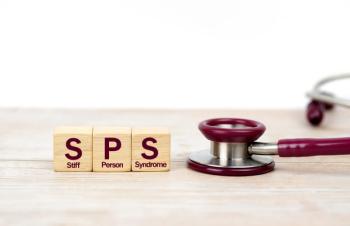
Azithromycin falls out of favor for common infections
The tide has turned against the use of azithromycin, a commonly prescribed antibiotic for common infections since the early 1990s, because of the risk of antimicrobial resistance.
The tide has turned against the use of azithromycin, a commonly prescribed antibiotic for common infections since the early 1990s, because of the risk of antimicrobial resistance.
Treatment guidelines from the Canadian Paediatric Society last year recommended that azithromycin by avoided in cases of acute pharyngitis, acute otitis media, and pneumococcal community-acquired pneumonia in the pediatric population.
“Breakthrough pneumococcal bacteremia in patients undergoing treatment with azithromycin has been described, which is not surprising given that the drug is largely transported within cells rather than in the circulating blood. The occurrence of intravascular pneumococcal infections despite treatment suggests that azithromycin should be avoided in patients with significant risk of bacteremia,” Philippe Ovetchkine and Micheal J. Rieder said in a
They said that azithromycin should only be used as second-line therapy in cases of life-threatening beta-lactam allergy to treat acute pharyngitis caused by macrolide-sensitive group A beta-hemolytic streptococcus or to treat pneumonia caused by atypical bacteria.
The problem with azithromycin is its long half-life of up to 96 hours, which contributes to the development of resistance, according to Joseph Lex, MD, who spoke at the American Academy of Emergency Medicine 20th Annual Scientific Assembly, reported by
“The way [azithromycin] is being used, you’re likely to get a subinhibitory nasal pharyngeal concentration, so these kids actually become carriers of azithromycin-resistant pneumococci,” Lex explained to Medscape.
ISDA guidelines
In 2012 the
Amoxicillin-clavulanate is recommended instead of amoxicillin alone as empiric antimicrobial therapy for acute bacterial rhinosinusitis in children and adults. High-dose amoxicillin-clavulanate is recommended for these patient populations from areas with high endemic rates of invasive penicillin-nonsusceptible Streptococcus pneumoniae, those with severe infection, those attending daycare, those who are less than 2 years and greater than aged 65 years, those who had a recent hospitalization, those treated with an antibiotic within the last month, or those who are immunocompromised. Children with uncomplicated acute bacterial rhinosinusitis should be treatment for 10 to 14 days and adults for 5 to 7 days, the guidelines state.
The IDSA clinical guidelines for acute bacterial rhinosinusitis recommend either doxycycline or levofloxacin or moxifloxacin for adults with a history of penicillin allergy. For children with a history of type 1 hypersensitivity to penicillin, levofloxacin is recommended. For kids with a history of non-type 1 hypersensitivity to penicillin, a combination of clindamycin and a third-generation oral cephalosporin is recommended.
The IDSA clinical guidelines do not recommend the use of macrolides for second-line therapy, such as clarithromycin and azithromycin, because of high rates of resistance among S. pneumoniae (approximately 30%).
American Academy of Pediatrics guidelines
The
“Clinicians should prescribe amoxicillin with or without clavulanate as first-line treatment when a decision has been made to initiate antibiotic treatment of acute bacterial sinusitis,” according to the American Academy of Pediatrics guidelines.
The guidelines note that risk factors for organisms with potential resistance to amoxicillin include a child in day care, a child having been treated with antimicrobial therapy within the previous month, and a child younger than 2 years. If a child has any of these risk factors, the clinician should consider high-dose amoxicillin-clavulanate.
For those children older than aged 2 years with a history of allergy to penicillin, a second- or third-generation cephalosporin can be used. For those younger than aged 2 years with a history of allergy to penicillin, a combination of clindamycin or linezolid and cefixime will provide coverage against both resistant S. pneumoniae and Haemophilus influenzae.
“Pneumococcal and H. influenzae surveillance studies have indicated that resistance of these organisms to trimethoprim-sulfamethoxazole and azithromycin is sufficient to preclude their use for treatment of acute bacterial sinusitis in patients with penicillin hypersensitivity,” according to the American Academy of Pediatrics guidelines.
Newsletter
Get the latest industry news, event updates, and more from Managed healthcare Executive.


















































